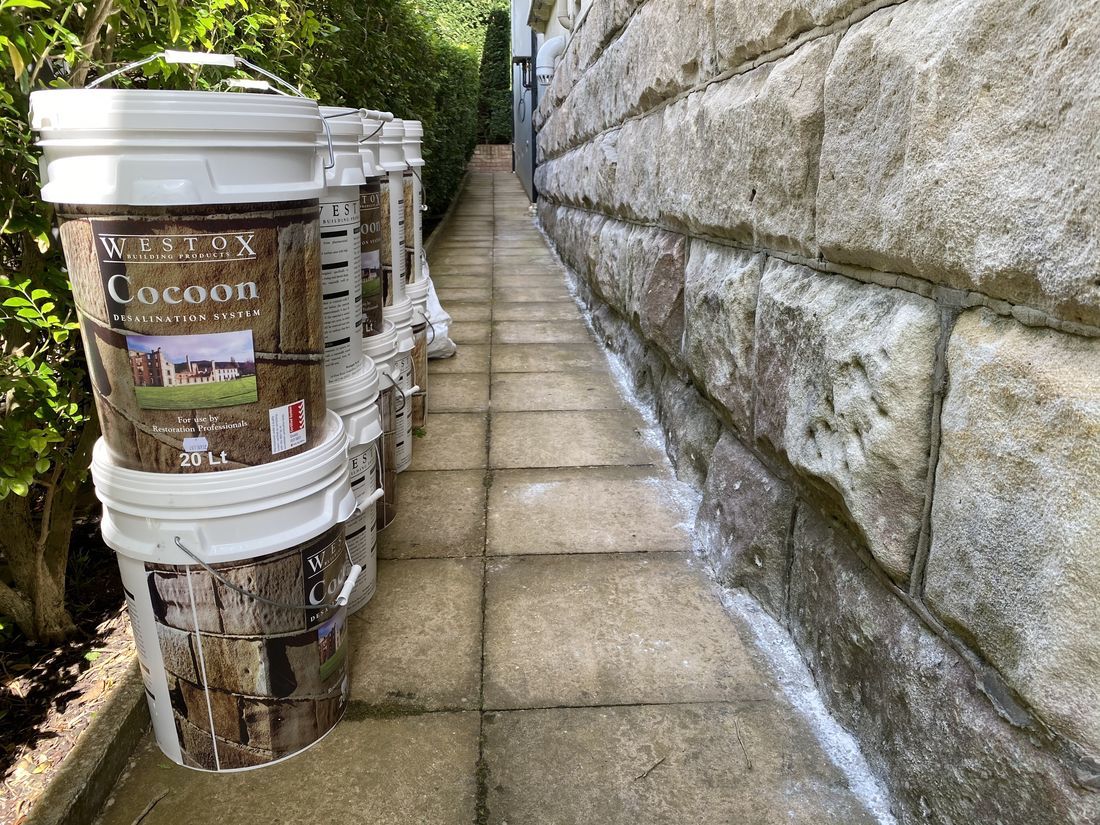The main drivers of sandstone degradation in Sydney are rising damp and salt contamination. The stone is very porous, so when it gets wet, via capillary action from the ground, the moisture carries salts. The salts eventually crystallize on the stone, just below the outer layer where it is drier, causing the surface to 'pop off' thus aiding the deterioration process.
Not only does the stone start to look unsightly, but eventually some of the more substantial and characteristically important stone features and carvings may ultimately end up requiring restoration. The aesthetic identity of old Sydney is under threat! At some point, therefore, when major restoration projects are being undertaken on these buildings, something will be deemed unaffordable to restore�and in fact, much of it will not be in the absolute best condition to restore at all, even at this point.
The Process of Salt Contamination
Salt primarily travels through masonry by a process known as capillary action. This is when any form of moisture that also carries salt (i.e., the moisture is saline), enters a porous material (the masonry), it can then rise up through that material, drawing the salt along with it.
In Sydney, conditions that lend themselves to masonry salt contamination are rife � the high levels of humidity, the moister that being by the coast brings, along with, of course, high rainfall.
If your masonry has salt continually drawn into it, it will be weakened and spall i.e., small particles or chips of the mason will start to break off, and the more at risk your masonry will be to the irreversible damage that we have talked about.
Every time your masonry deteriorates in this way, you increase the likelihood of having to pay for very costly building repairs.
Choosing the Right Professionals in Sydney
Experience should be one of the top qualities to look for when choosing masonry restoration specialists in Sydney�specifically, experience in heritage building preservation and stone conservation.
Many of these preservation projects are not simple and involve specialized restoration techniques. They require intimate knowledge of the types of material used in the past and when the historic structure was likely built. This helps the preservationist understand:
- The different qualities (both good and bad) of the types of stone used in the structure
- How the stone was likely prepared
- The tools used in preparation (i.e. how hand tools leave different types of marks compared to power tools)
- That the stone was likely set


